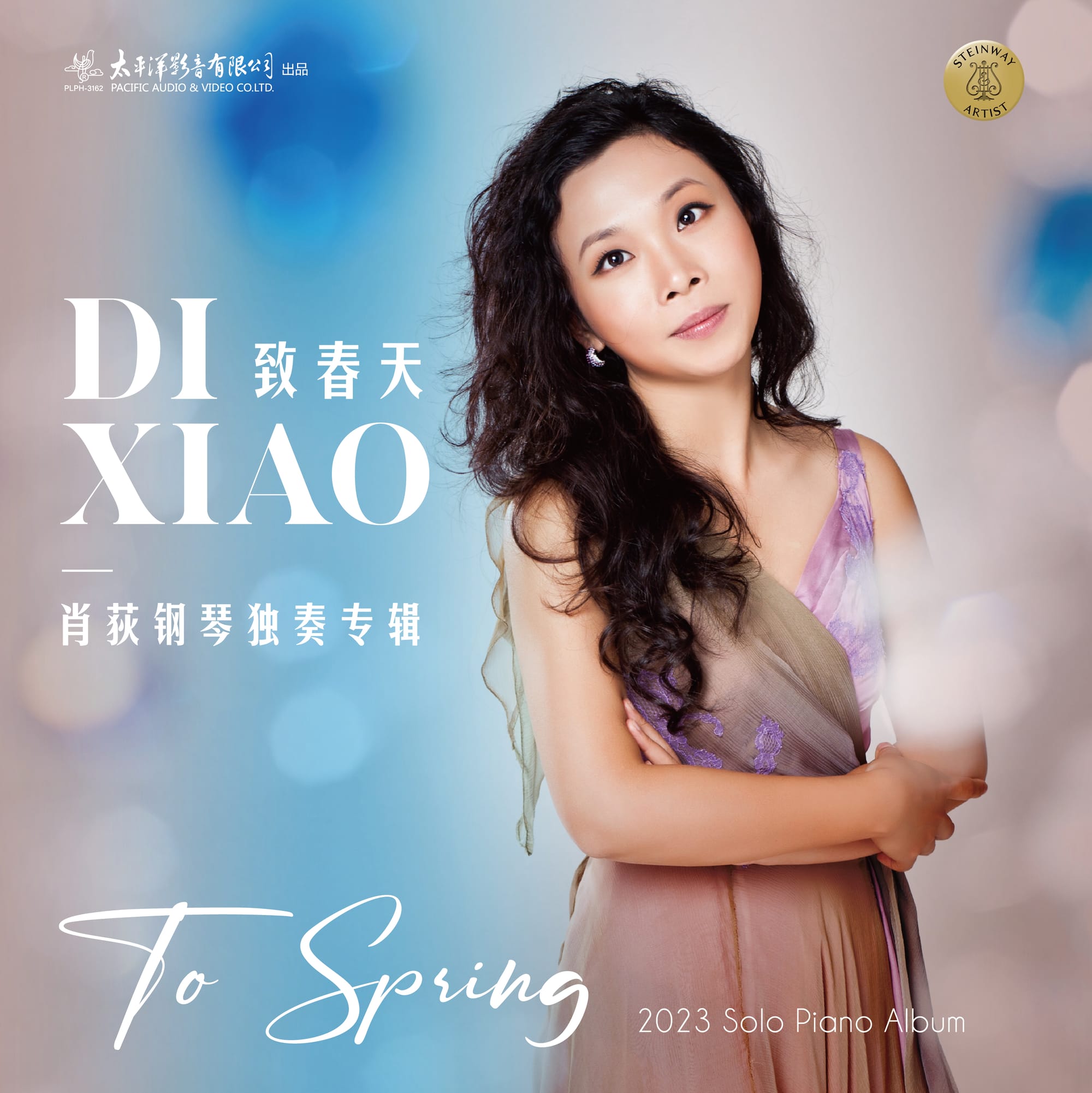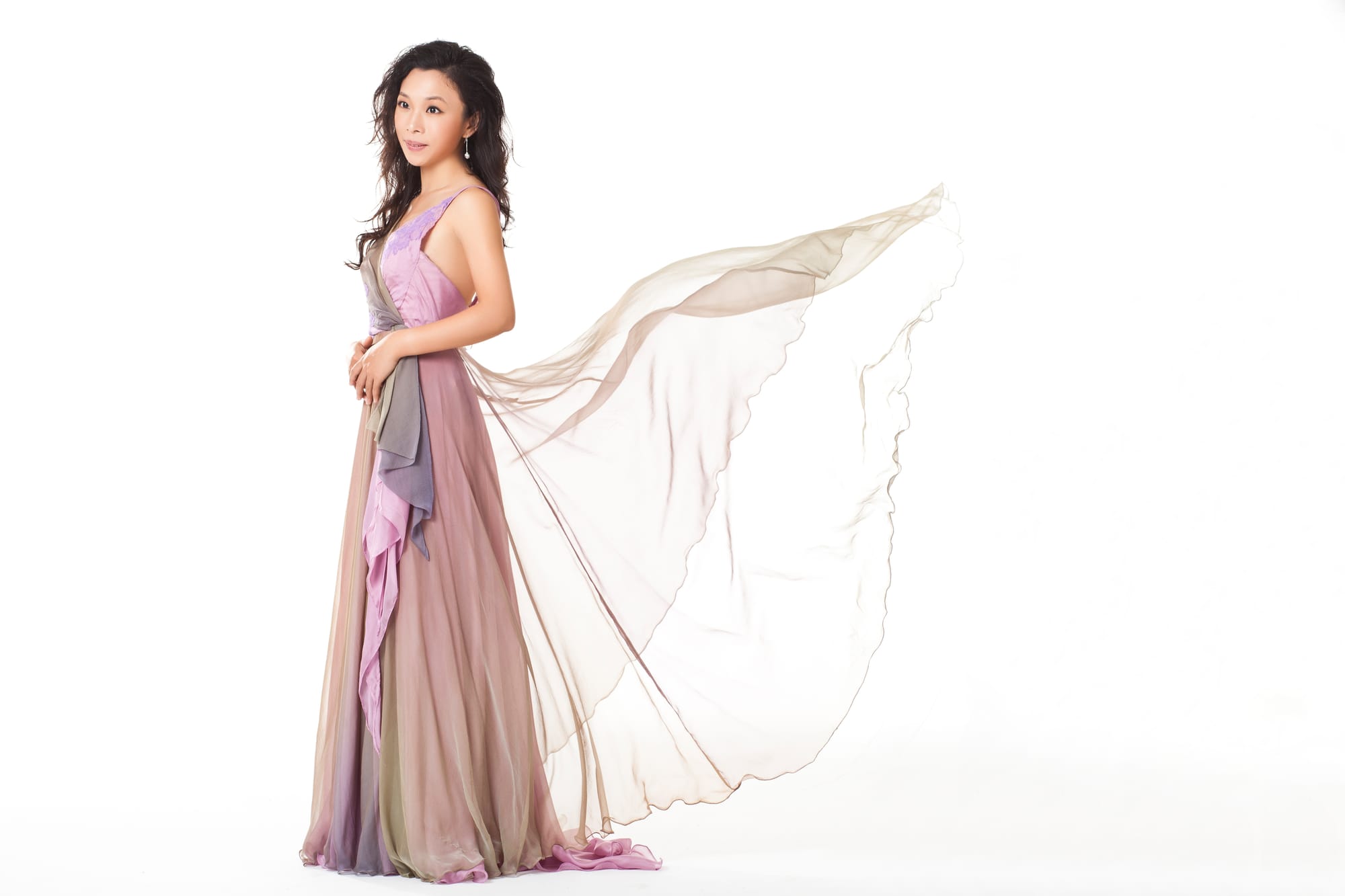To Spring: pianist Di Xiao's new album
Pianist Di Xiao is a musician of exquisite sensibility ... yhis is a delectable disc

Chinese pianist Di Xiao is a musician of exquisite sensibility; her new album celebrates the coming of Spring and was one of the discs I referenced in a recent article on Spring piano music for the UK magazine Pianist, to which this post may be seen as supplemental (or indeed read as an entity in its own right).
The sequence of music presented here is carefully considered, and begins with one of Xiao's own compositions, Wistful Spring. The Oriental, pentatonic harmonies are unmistakable, as is the sense of slightly melancholic reflection, with a timbrally richer, more chordal, central section:
The free-flowing expression of composer Josef Suk (1874-1935) seems only a small step away, although here we are placed in the Romanticism of the Czech lands. Suk is to this day an under-represented composer, and most biographies reference his relationship with Dvořák (who not only taught Suk; Suk married Dvořák's daughter!); his major orchestral work is the “Asrael” Symphony (Symphony No. 2 in C minor, Op. 27 of 1905/6, last heard and reported on by myself here). His Jaro (Spring) actually comprises five movements of which we have the final, “V rozlouženi” (Longing) in a glorious account, full of proper (singing!) cantabile lines. The introduction of the inner descending lines (44 seconds onwards) is a moment of pure magic, brought about via Xiao's differentiation of tones between “treble” and “alto” lines:
Far more famous is Norwegian composer Christian Sinding's Rustle of Spring (Frühlingsrauschen: although Sinding was Norwegian, it originally appeared as a set of six pieces - Sechs Stücke - Op. 32 in 1896 published by C. F. Peters in Leipzig). This was very popular at one point in the 20th century, it seems to have fallen somewhat out of favour, so it's lovely to see it back in a properly modern recording. Here, it is velocity of the inner-voice activity that creates the piece's momentum against with the delicious, memorable melody sings:
The whispered intimacy of Grieg's “To Spring,” from which the disc takes its title, is the ideal complement to the Sinding. Listen to the gorgeous way Xiao darkens her sound in response to the harmonies, and how she then acknowledges the power inherent in Grieg's music, something often overlooked. This piece is one of Grieg's many Lyric Pieces:

Nikolai Medtner (1880-1951) was a Russian composer who emigrated after the Revolution and lived for years in Golders Green, North London. His own recordings of his works have been issued on compact disc, most notably by APR (Appian Piano Recordings). here we have his Primavera (Spring), Op. 39/3. There is a Russian stream of melancholy detectable here; we are certainly a long way from Scandinavia and Czechia now! This is one of Medtner's many Forgotten Melodies. The piece is lovely - listen out for Xiao's delectable, quasi-improvisatory roulades around 3"18 and after:
... and from Volume 3 of that APR series (which I do recommend it highly), here's the composer himself:
Tchaikovsky's piano works, with the exception the First Piano Concerto, had been heard done by. The concertos - No. 1 is everywhere, but I do believe I have only heard Nos. 2 and 3 once each in concert over the last 40+ years of concert activity!. The cycle known as The Seasons (I say that as there are twelve movements one per month, so maybe it should be “The Months”) does get out into recitals and on disc, but not nearly enough. The sequence of miniatures is delectable, Tchaikovsky at his most intimate, the polar opposite of the grand virtuoso gestures of the First Piano Concerto. Xiao offers March (Song of the Lark), April (Snowdrop) and May (Starlit Nights). Her variety of touch in “April” is utter delight, and the combination of hope and melancholy is perfect:
“Stalit Nights” is enchanting, before we travel again: from Russia, first to China for YiQiang Sun's wonderfully quirky Spring Dance (1978; Sun was born in 1945), which sees to take a slight diversion itself towards Spain - to my ears at least! - while remaining rooted in the Orient. It's quite a combination, and also includes passages of high virtuosity. A lot happens in a mere six minutes and nine seconds!:
From China, thence to America and a piece by William Mason (1829-1908). Here's an interesting chap, although his brother, Henry, might have some resonance to some as part of the American piano manufacturers Mason & Hamlin. William traveled to Europe and studied with Liszt and Moscheles; he is known to have admired Thalberg. For those interested in investigating further, there is a full disc of Mason's music on Naxos, played almost exclusively by Kenneth Boulton (although JoAnn Barry plays Badinage). Anyway, here’s Xiao in Silver Spring, Op.6; she is, to my ears, more convincing than Boulton in this piece:

... and so to England, or is it Ireland? - John Ireland, that is: “The Island Spell,” one of a series of three Decorations, composed in 1912/13. Ravel meets fairy magic in this piece; and those how find themselves enchanted might wish to explore further and try out Ireland's wonderful Piano Concerto (here's a link to a live performance by another pianist I admire very much for their sheer musicality, Leon McCawley, at the Proms in 2019 with the BBC Concert Orchestra under Bramwell Tovey). Anyway, here's Di Xiao in “The Island Spell”:
And how to close? What better way than with Mendelssohn, a palette- and soul-cleansing “Spring Song,” Op. 62/6:
This is a delectable disc, welcoming in Spring in the most beautiful of fashions. Xiao plays on a Steinway recorded at the Royal Birmingham Conservatoire.
To Spring is available for streaming at Amazon here., and is currently only available in hard copy in China (although European distribution is in the pipeline, and this post will be updated as necessary).
